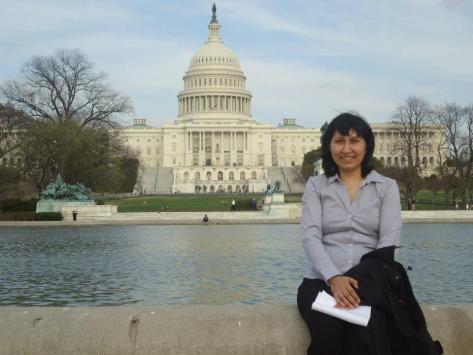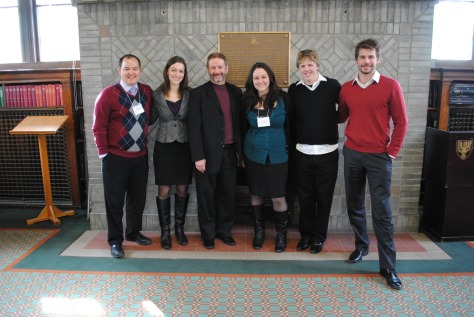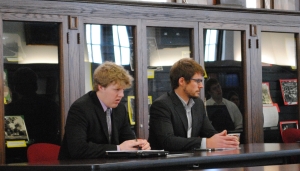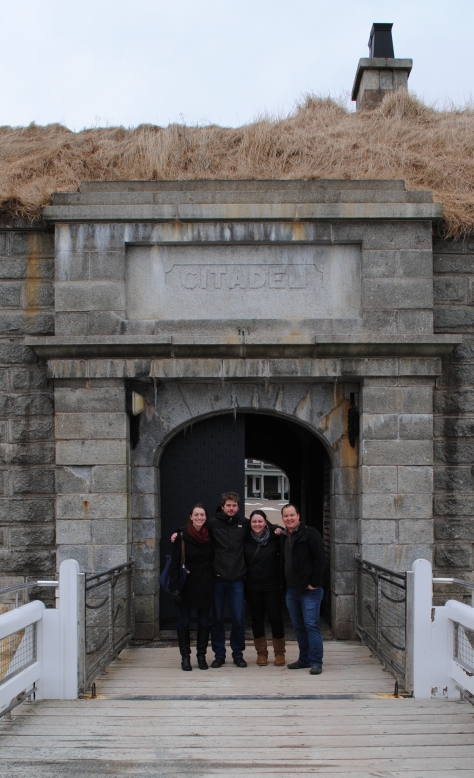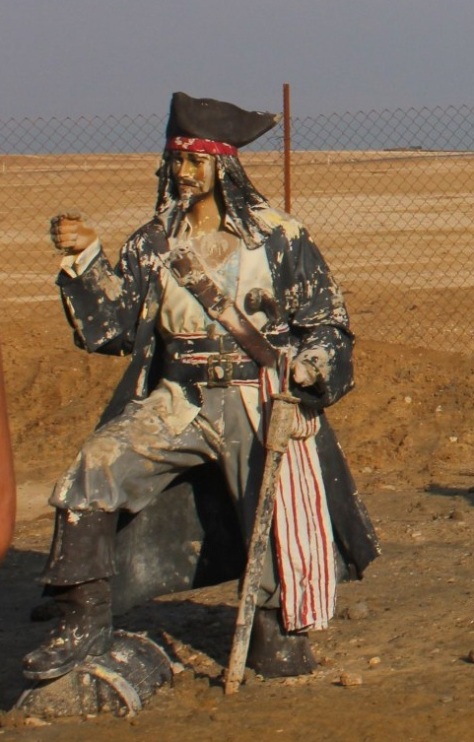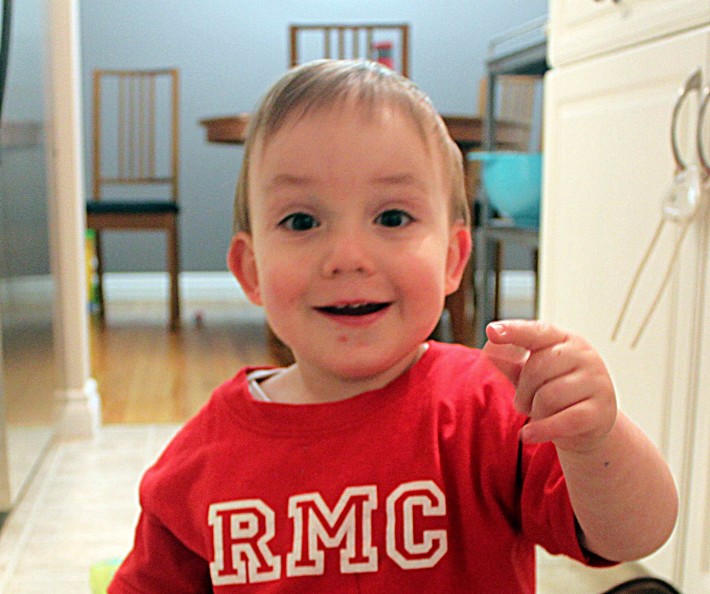The 2013 Carnegie International Nuclear Policy Conference took place at the Ronald Reagan Building and International Trade Centre, Washington D.C. on April 8-9, 2013. This conference brought together 800 nuclear experts and policy makers from 46 countries to discuss emerging trends in nuclear nonproliferation, disarmament, and nuclear energy. It was a great learning experience for me to attend this conference and meet experts, scholars, and policy-makers with diverse backgrounds.
Yukiya Amano, Director General of the International Atomic Energy Agency (IAEA), was a keynote speaker in the conference. He outlined the contributions as well as challenges of the IAEA. He described Iran, North Korea, and Syria as the biggest challenges for the agency but at the same time he was optimistic about the greater role of the agency in coming days. He described how the IAEA safeguards evolved with the passage of time and emphasized the greater role of advanced technology in the verification process.
The next session was about “deterrence and disarmament in Obama’s second term” in which speakers from the USA, Russia, and China participated. Yao Yunzhu from the Academy of Military Science, China emphasized that the US and Russia have the biggest nuclear arsenals and should first disarm themselves to the level of China before China can join the disarmament process. Alexei Arbatov (Carnegie Moscow Centre) argued that China is the only country with small nuclear arsenals that can build nuclear weapons quickly to the level of Russia, therefore, China has an important role to play to make sure that China will not benefit from the situation if Russia and the US reduce their nuclear weapons. Rose Gottemoeller (Undersecretary of State for Arms Control and International Security) highlighted the initiatives taken by the Obama Administration to reduce the role of nuclear weapons in national security and emphasized the need for further negotiations with Russia.
In the “Humanitarian Dimension of Nuclear War, Deterrence, and Disarmament” session, the role of nuclear weapons from a moral perspective was discussed. In the 2010 NPT Review Conference, countries agreed to comply with international law, including humanitarian law. This was an important development, which shifted the state-centric approach to nuclear weapons towards a human security approach, but the question of how using nuclear weapons in self-defence can be reconciled with humanitarian law remained unresolved.
The “Too Little Disarmament, Too Much Nonproliferation?” session discussed the balance between nuclear disarmament and nonproliferation. Christopher Ford (US Senate Committee on Appropriation) argued that nonproliferation is the base of the regime and without a strong base we cannot build other pillars. Herald Muller (Peace Research Institute Frankfurt) was in favor of the right balance between nonproliferation and disarmament.
In the “Proliferation Implications of New Fuel Cycle Technologies” session, the debate focused on the impact of new fuel technology, like laser enrichment and processing, on proliferation. Advocates argued that safeguards could prevent proliferation while critics emphasized the adverse affects of this technology for nonproliferation if commercialized.
In the “Deterring Cyber and Space-Based Threat” session, use of cyber attack and capability to destroy objects in space was discussed with the relevance of nuclear deterrence to these threats.
“Are Treaties like FMCT and CTBT Still Vital?” was a question asked in the next session. The Conference on Disarmament (CD) cannot start negotiations on FMCT unless Pakistan joins the consensus. Maleeha Lodhi (Former Ambassador of Pakistan to the United States) defended Pakistan’s position in the post India-US Nuclear Agreement and pointed out that Pakistan can join the consensus if offered the same nuclear agreement or is willing to negotiate a FMCT treaty that includes existing fissile material.
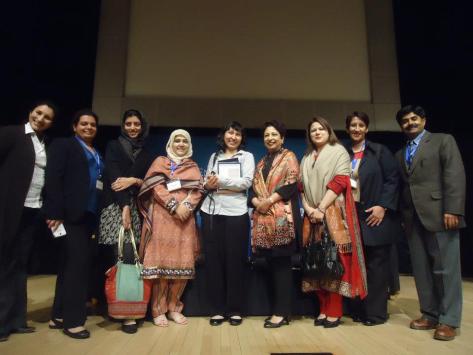
Group photo with Maleeha Lodhi, former Ambassador of Pakistan to the United
States (fourth from the right)
In the next session, “Whither Nuclear Power?” was discussed with the relevance of the use of nuclear power after the Fukushima accident.
The second day of the conference was started with the keynote speech of M. J. Chung (Member of National Assembly of the Republic of Korea). He explicitly argued in favor of South Korea’s nuclearization against the North Korea nuclear threat.
In the “Managing Nuclear Power Post-Fukushima” session, the safety of nuclear power was assessed in the aftermath of the Fukushima nuclear disaster. The panel agreed on the sovereign right of states to develop nuclear power but Fukushima forced us to focus more on cost, security, and safety.
“The Arab Spring and a Middle East WMDFZ” was next, in which implications of the political changes in the Middle East were assessed for implementing a WMD-Free Zone. Dore Gold (Jerusalem Centre for Public Affairs) rejected the possibility of the zone in an unstable political situation. Representatives from Egypt and Iran argued that if Israel has nuclear weapons there is always incentives for other Middle Eastern states to pursue a nuclear path, therefore, Israel has a more important role to play in negotiating the zone.
“Is there an ‘Emerging Power’ Agenda?” was a session in which representatives from India, Brazil, and Turkey explored a common nuclear agenda. They agreed that ‘emerging powers’ are in favor of the nonproliferation regime but demanded a greater role.
It was an interesting discussion in the next session, “Extended Deterrence: Defining the U.S. Reassurance Requirement”, examining how the United States could have a balance between reducing the role of nuclear weapons and fulfilling its extended deterrence commitments.
The last session “Proliferation and Regime Change” assessed how nuclear proliferation caused changes in regime policies.
The above-mentioned conference proceedings show that the conference focused on deterrence, nonproliferation, disarmament, and nuclear industry. This conference examined these four themes through broader analytical lenses such as multilateral nonproliferation measures, sanctions, humanitarian law, and the implications of regime-change policies for the regime. For me, it was a unique learning opportunity to familiarize myself with scholars from around the world who share an interest in my research topic. It was beneficial for me to discuss my topic with them, and was helpful in setting the stage for formal interviews and contacts with respect to my research.
— Saira Bano, PhD Candidate


